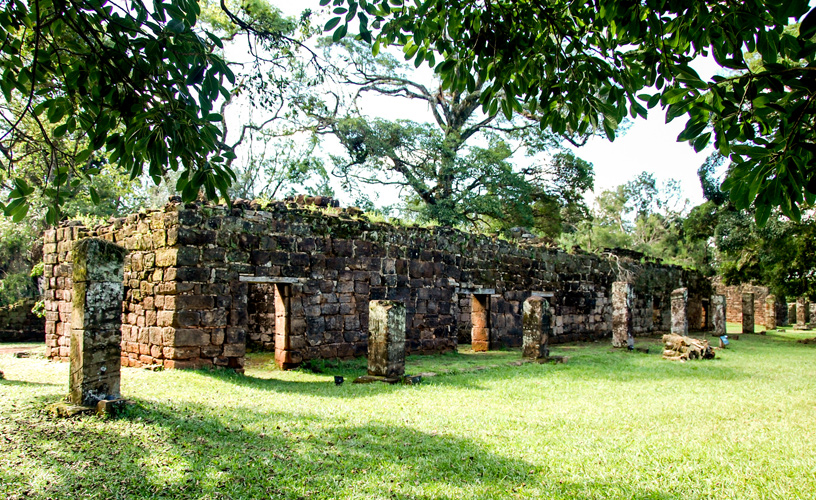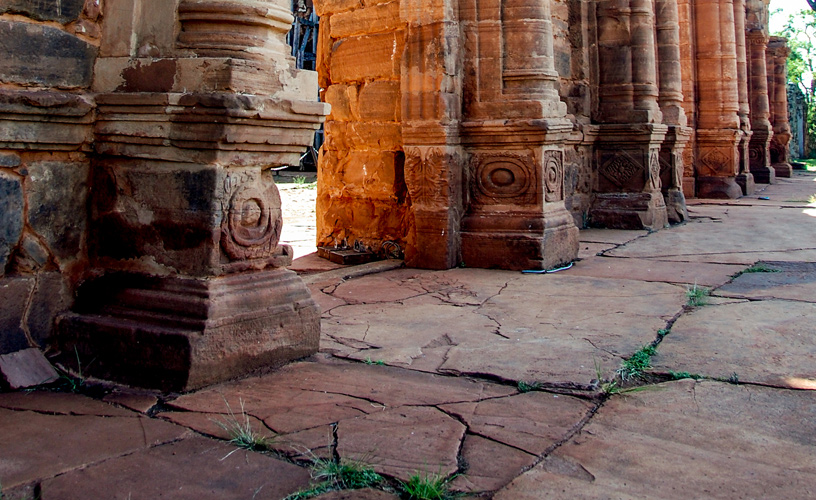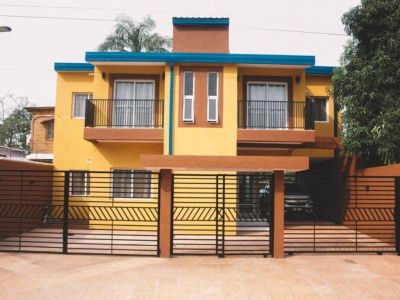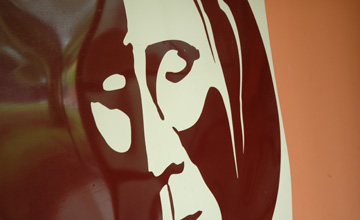We visited the Jesuit ruins in San Ignacio Miní. We learned about its history, its days of glory and its subsequent disappearance. Take a tour around the beginnings of the new world.
The day after we enjoyed the natural show of the
Iguazú Waterfalls, we traveled inland in the Province of
Misiones. This time we visited the famous
Ruins of San Ignacio Miní, declared World Heritage by UNESCO in 1984.
We set out with great expectations. We would be visiting
one of the most emblematic Jesuit reductions in America, the one featuring the best restoration conditions as compared with other reductions in the Order. We already knew that the aim of this mission was to evangelize the Guaraní natives.
After traveling along National Route 12 for three hours heading Southwards, we arrived at the village of San Ignacio, where the ruins are located.
We paid for the entrance ticket and we entered the mission that gives testimony of the labor done by the Jesuits, where the native culture once mingled with the European heritage without any kind of violence.
Today, only vestiges remain of a settlement where science and art were part of the union between the white man and the guaraní people.
A local guide told us the history of the mission and talked about the various ups and downs it had to go through until the Jesuit Order was expelled by King Charles III of Spain.
As we moved about the venue, we started to admire various buildings made with red sandstone blocks.
The layout of the city is one of the most notorious works carried out by the Jesuits. The plaza de armas –turned into a central yard nowadays–, the cabildo (ancient town hall), the church and the houses of the religious men and the natives, the hospital, the college, the workshops and the stores are part of the buildings that have given shape to this settlement.
Life in the mission used to revolve around the square. The main entrance was a central street whose perspective was focused on the church façade. That was our next destination.
As we walked on and listened to the guide, we learned that the buildings in the mission feature a Baroque conception. We could also see the elaborate designs on the stones carved with silhouettes of angels, doves and local plants, on which the guaraní stereotypes may be observed.
The guide told us that between the XVII and XVIII centuries, both the Jesuits and the guaraníes managed to mix their cultures without facing any violent conflicts. It was one of the few cases in which colonists did not suppress the American culture but contributed to the primitive habits by teaching the Gospels, new customs and ways of work and social organization.
“It seems that the effort made by the Jesuits in their period has not been splendorous. On the one hand, they were invaded and displaced in several opportunities by the bandeirantes, who came from the area presently known as São Paolo in Brazil, with the purpose of catching the natives to sell them as slaves. And, on the other hand, it set an extremely tragic ending in 1768 with the expulsion of the Missionary Jesuits”, our guide asserted.
We penetrated what used to be part of the main temple. Its façade was made in 1610 with three large entrance gates, whose capitals feature several relief patterns.
The guide explained to us that in the mid XVIIIth century, the mission we were visiting used to lodge three thousand dwellers. Cultural and handicraft activities were multiple and varied, whereas the strategic location over the Paraná River would benefit trade with various surrounding settlements.
Unfortunately, with the expulsion of the Jesuits, the Mission of San Ignacio Miní was completely abandoned.
We watched the walls eagerly. Time seemed to have stopped for them. We went all about the venue trying to imagine what life would be like in the core of the mission.
We asked why the Jesuits had been expelled from America, bearing in mind that they were doing a good job. The answer left a bitter taste in our mouth. Sadly, it was proved once again that it was better to dominate the weak than to provide them with tools to make them stronger both personally and culturally. A story repeated many times through history.
After visiting the ruins of San Ignacio, we started our way back to the City of the Great Waters. The sun was setting and the sounds of the Paraná rainforest surprised us with the shrieks of the guaraní souls that were slaughtered only five hundred years ago.
Marcelo Sola
Eduardo Epifanio
Phone: +54 3757-420778
Cell phone: +54 3757-686336

































